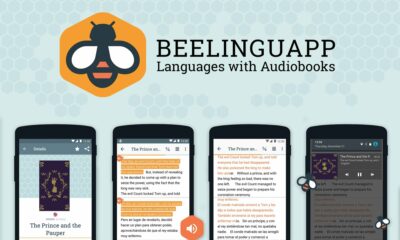PPC
9 PPC Strategies You’ll Learn at Hero Conf London 2022
For over a decade now, Hero Conf has been considered the Holy Grail of PPC conferences. With 44 sessions, led by 40+ Paid Search Experts over two full days, this experience is guaranteed to give you the push you need to optimize the way you manage your accounts and reach your desired results.
After successfully completing Hero Conf Austin 2022, our most awaited return to in-person conferences, now it’s turn for our European peers to join in on the fun. In this article, you’ll learn more about the PPC Strategy solutions that will be covered at Hero Conf London 2022.
How to solve an age-old SEO-SEA issue? How much should we invest in our branded keywords?
Branded keywords are always a hot topic between SEO and SEA. Advertising leads to cannibalization of free organic rankings, but if we don’t, we might lose valuable click share. During this session, Marcel Smal, Co-Founder of Roots Network, will share a unique approach, to pay exactly what each branded click is worth for Search as a whole. He’ll explain:
- How to group your branded keywords based on incremental performance.
- How to calculate the right target for your branded keywords.
- How to set up solid incrementality experiments for your branded keywords.
- How to deal with other branded factors like resellers and news articles.
Proving the value of PPC in your overall marketing strategy
Too often, PPC is seen as expensive and inefficient. These are often common misconceptions from those who are generally single-channel minded or haven’t explored PPC in depth. Throughout this session, you will learn the value of PPC and where it fits into an overall marketing strategy with Azeem Ahmad, Digital Marketing Lead at Azeem Digital.
You’ll also learn how to overcome common objections about the channel, how to respond to views around investing less into PPC and become more confident at addressing misconceptions about the channel to improve your overall marketing strategies.
The Unsexy, yet Crucial Side of PPC: Measurement & Tracking
Understanding how to deploy automation, AI, tools and tech is the recipe for PPC success. However, it’s only as good as the data you put into it. How much do you interrogate what goals are being measured, and how important they are to your business? In this session led by Gemma Russell, Senior PPC Strategist at Fountain Partnership, you will learn:
- How to determine if your company’s measurement and tracking is robust and where the gaps are.
- How to prioritize this list and some top tips to get your teams excited about PPC measurement.
The Art & Science of PPC Account Structures
CPCs and CACs are spiking across the board, while advertising giants like Google, Facebook, and Microsoft are implementing more automation and targeting options while simultaneously removing many of the controls marketers have historically used to prevent wasted spend. This reality is a perfect storm that will result in most marketers spending more and getting a LOT less.
Given this reality (and the relentless march toward more automation), having a deep understanding of account structures – and how to leverage them to achieve your goals – has never been more important. In this session, Sam Tomlinson, EVP at Warschawski and Top 10 Speaker at Hero Conf Austin 2022, will take a dive deep into the essential targeting structures, plus, how they can be used to prevent automation from running wild. You’ll also…
- Understand the common SEM account structures (alpha/beta, SKAG/STAG, Cascade, etc.) – as well as the benefits and limitations of each.
- Learn how to overlay new targeting data, plus, options onto existing account structures to create robust, intent-driven campaigns.
- Understand how different account and targeting structures impact various automated strategies.
- Learn how to use scripts and rules to enable your campaigns to evolve while not running wild.
Adtech and PPC tool adoption – How to bring order to chaos!
In this session, Inderpaul Rai, Head of Acquisition & Performance Marketing at ufurnish.com, will provide you with guidance on how to best set up for success when identifying the type of tech you need in a business. Also, he’ll walk through how to select the best vendor to achieve your goals all with the purpose of ensuring usage remains high six months down the line and the tool isn’t forgotten about!
De-risk your ad spend and achieve guaranteed profits
Undoubtedly, Google’s Shopping ads can be an incredibly effective marketing channel because of the shopper- and product-specific results shown. So much useful content but, it comes with risks!
For relatively larger merchants, Google enables Target Return on Ad Spend (Target ROAS for short) that attempts to generate revenues at the target return on ad spend you set. Basically, ROAS is a revenue share with Google. The industry average ROAS for paid search is nine percent. Quite a significant figure when you consider this as a share of your revenues.
But, with Target ROAS, there are risks to the correct allocation of your budget. This is because ROAS-based ads introduce biases unfavorable to you. Google Shopping (and other paid search platforms) are trying to optimize conversion value, and as long as it hits your target, it does not care about the real value of the conversions to you. Nicolas Huber, CEO at Noopd Ltd, will present case studies of these biases, and how they can leave a merchant selling unprofitably. He’ll then present a data-driven method to reverse the inherent biases of ROAS. This in turn de-risks your ad spend and can guarantee the profitability of every sale, at the product level.
The Art and Science of Creative Persuasion
Marketers love a good theory based on common sense and insight. Although we have a history of not robustly testing ideas, but instead relying on industry myths and half-truths, marketing science has begun to change that. With a process grounded in research and testing to create better strategic thinking Peter Watson-Wailes, Founder of Tough & Competent will be:
- Showing how creativity influences people.
- Unpacking the three most common myths in marketing.
- Outlining five KPIs teams should always track.
- How to conduct research that drives lasting growth.
The three biggest takeaways are:
- How to conduct proper research for marketing purposes.
- How research fits in with a set strategy.
- How to avoid wonky thinking in creative work.
Tested to Death: When A/B tests no longer move the needle
Most marketers have abused A/B testing. They test every webpage on their site to death. However, they are still stuck with low conversion rates. Why? Because increasing conversion rates was never about A/B testing. With Ayat Shukairy, Co-founder & CCO at Invesp attendees will learn,
1. Why do most AB tests fail?
2. What is template tweaking? When should you use it and when you should avoid it?
3. The hierarchy of conversion. Understanding the different types of items that impact your website conversion rates.
4. Re-thinking your approach to conversion optimization to generate real conversion increases.
“Measuring is easy,” said no one ever.
We all know – Measurement is getting complicated, especially when we talk about multi-touch attribution. But don’t worry, Gianluca Binelli, Founder of Booster Box Digital, is here to tell you about an incrementality survival guide. The tools marketers need to maneuver through the changing landscape of measurement and correctly allocate their budget.
Curious about what other topics will be covered? Stay tuned as we publish more articles on everything that will be happening at Hero Conf London 2022.
For now, don’t miss out and secure your seat!



















You must be logged in to post a comment Login